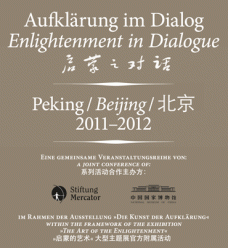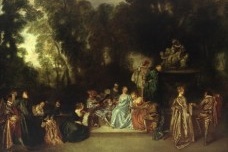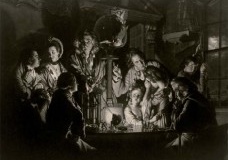
newspaper
agenda cultural
An exhibition presented by the Staatliche Museen zu Berlin, the Staatliche Kunstsammlungen Dresden and the Bayerische Staatsgemäldesammlungen Munich, in conjunction with the National Museum of China in Beijing
The exhibition falls under the joint auspices of Hu Jintao, President of the People's Republic of China, and Christian Wulff, German Federal President.
The Staatliche Museen zu Berlin, the Staatliche Kunstsammlungen Dresden and the Bayerische Staatsgemäldesammlungen Munich jointly present a sweeping exhibition of European art from the Enlightenment in conjunction with the National Museum of China. In spring 2011, the three German museum bodies will unveil more than 450 exhibits, spread over a total display area of 2700 m² in the National Museum of China in Beijing. At its heart, the exhibition will feature artworks which best exemplify the great ideas of the Enlightenment, its influence on the fine arts and its effective history, from the artistic revolutions of the 18th century right up to the present day.
Art gained new significance in the Europe of the Enlightenment. Technological developments and social change accelerated the dissemination of pictures into all areas of public life. The artist evolved into a public figure, a genius and revolutionary. The idea that art can change people and society became the guiding tenet of an entire epoche.
The Staatliche Museen zu Berlin, the Staatliche Kunstsammlungen Dresden and the Bayerische Staatsgemäldesammlungen Munich have made this epoch the focus of a major exhibition in conjunction with the National Museum of China. With their combined loans, that include masterpieces by Friedrich, Füssli, Gainsborough, Watteau, Piranesi and Goya, they are able to present the full spectrum of the art of the Enlightenment, encompassing painting, sculpture, prints and drawings, crafts, fashion and even exquisite scientific instruments.
In a joint statement, the Directors-General of the three institutions, Michael Eissenhauer, Berlin, Martin Roth, Dresden, and Klaus Schrenk, Munich, announced: “The exhibition unveils the visual world of an epoch on the verge of modernity, whose ideas were of defining importance for art and remain so even today; the effective history of those sweeping ideas is now to be made palpable to a Chinese audience.”
This joint exhibition held at the National Museum of China in Beijing is primarily financed by the German Foreign Office and marks the high point of the German-Chinese programme of cultural events, bilaterally agreed upon in 2005. After the celebrated completion in spring 2011 of renovation work by Hamburg-based architects Gerkan, Marg und Partner, the National Museum of China is set to become one of the largest museum buildings in the world. Along with its architectural new dimensions comes the demand of establishing the museum as a forum of art and culture for all continents. The exhibition on the Enlightenment’s artistic and intellectual legacy that continues to be of seminal importance for Western civilization sets a signal of the educational ambitions of the museum itself as a place of enlightenment.


Antoine Watteau: Entertainment in the Open Air, around 1720 © Staatliche Museen zu Berlin, photo: Jörg P. Anders

Valentine Green after Joseph Wright of Derby: The Experiment with the Air Pump, 1769 © Staatliche Museen zu Berlin, photo: Volker-H. Schneider

